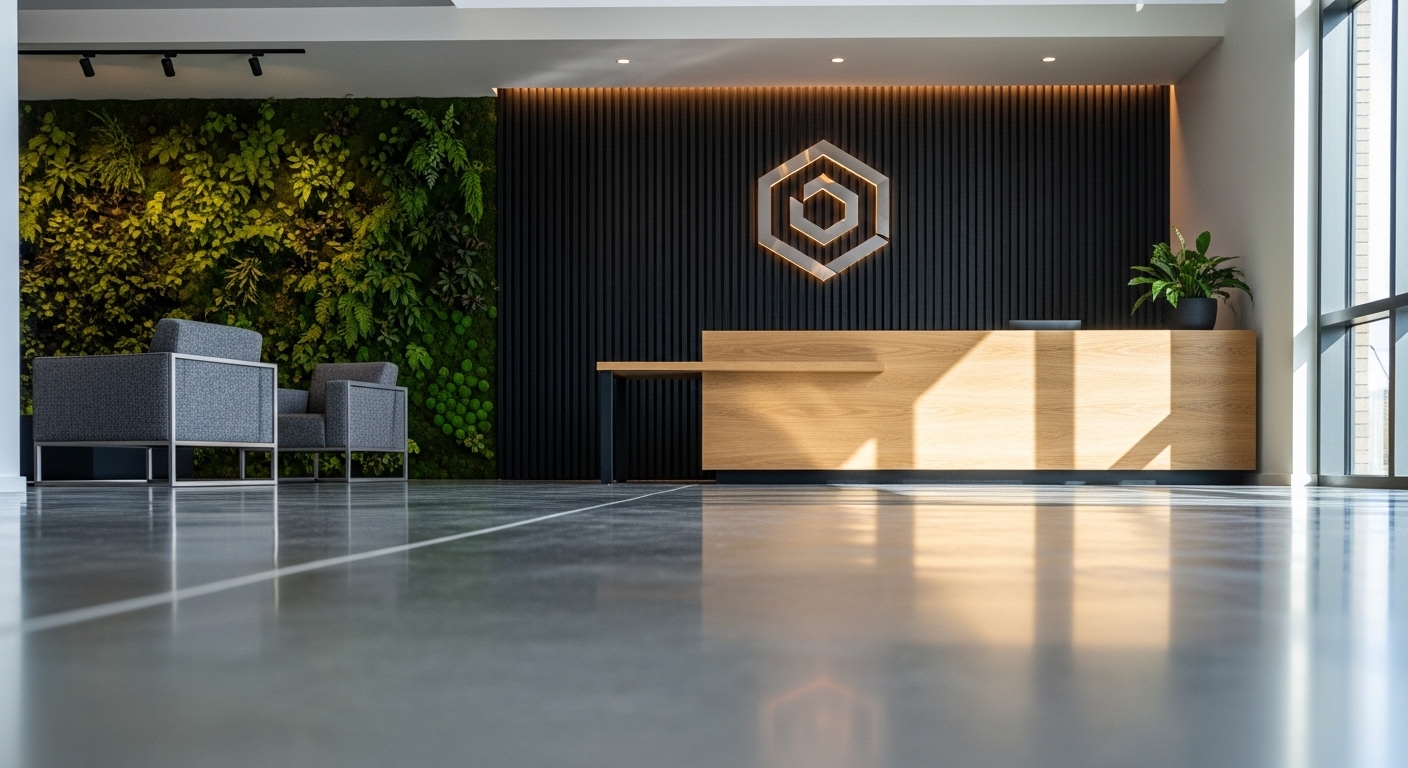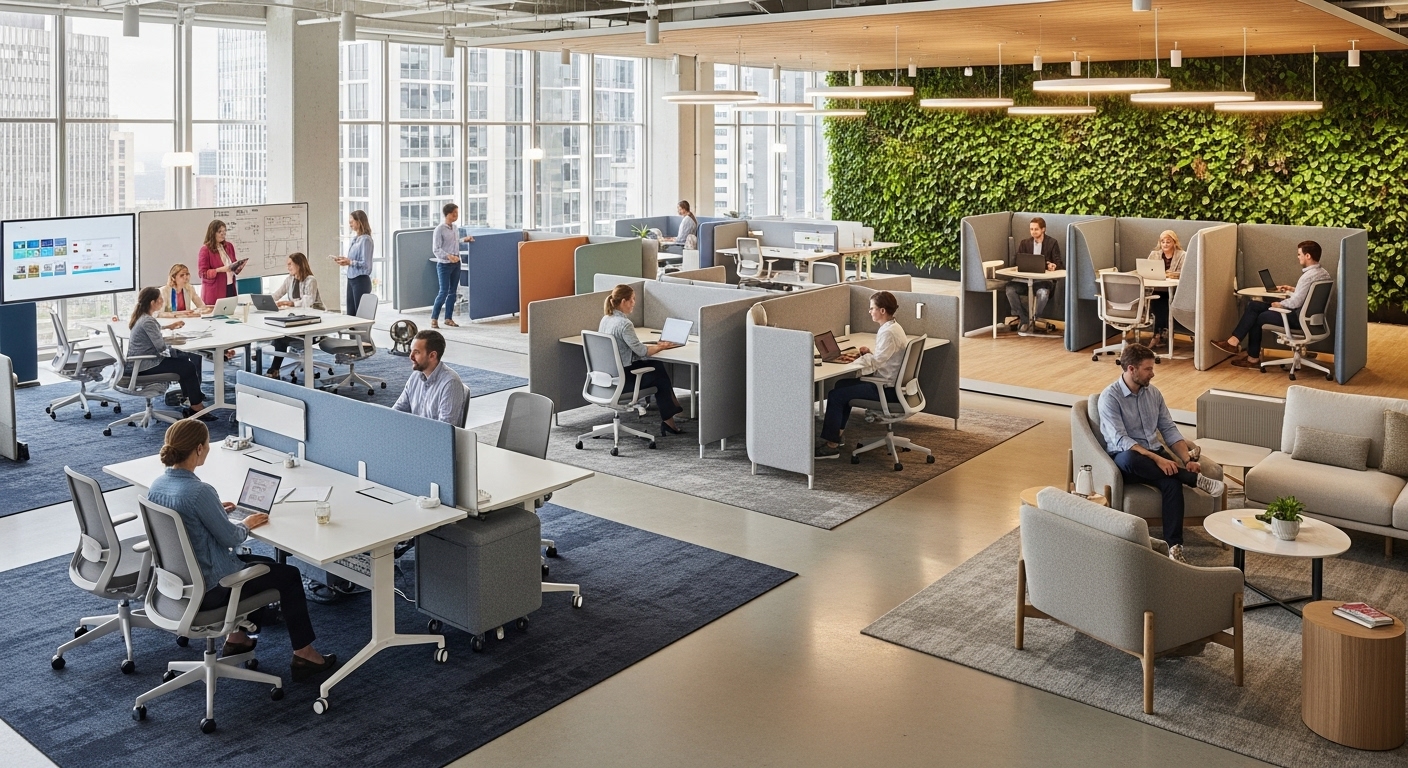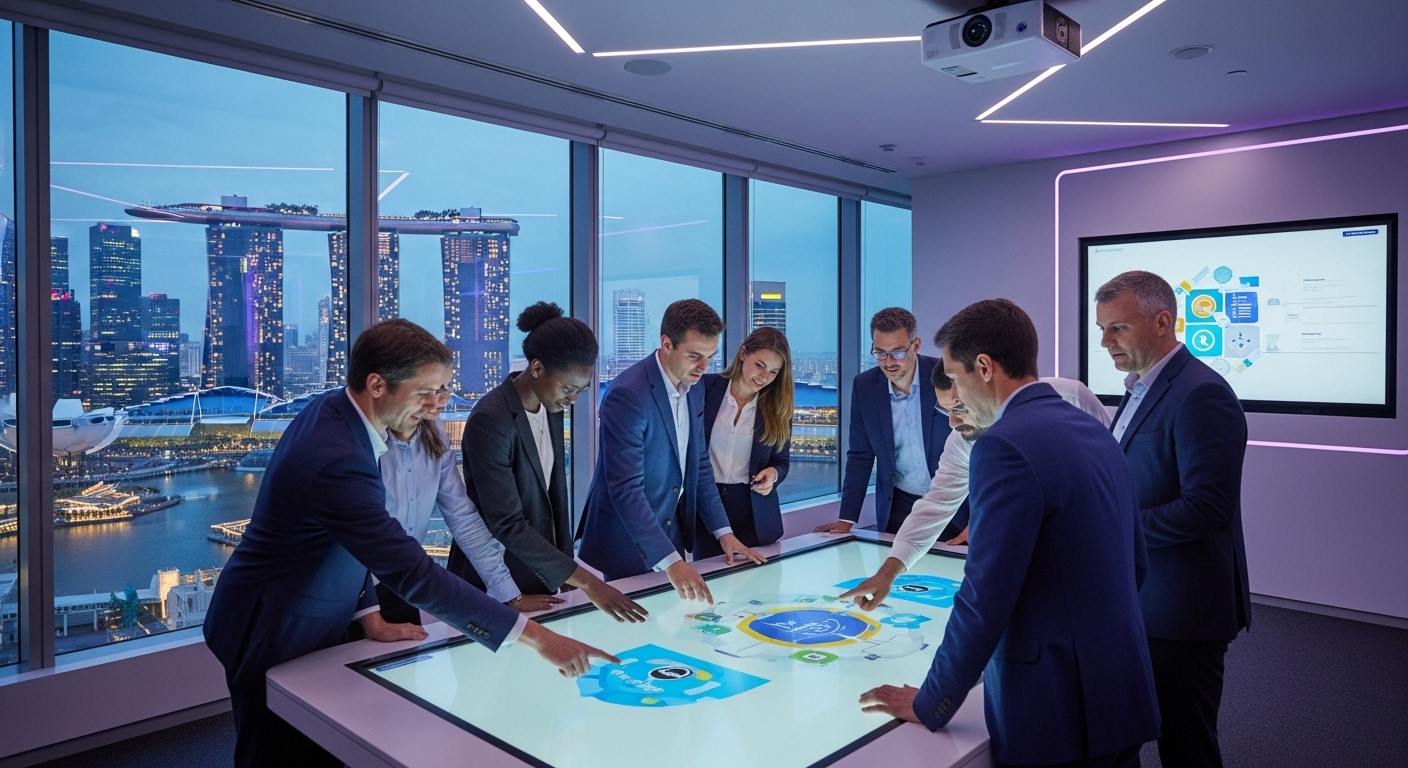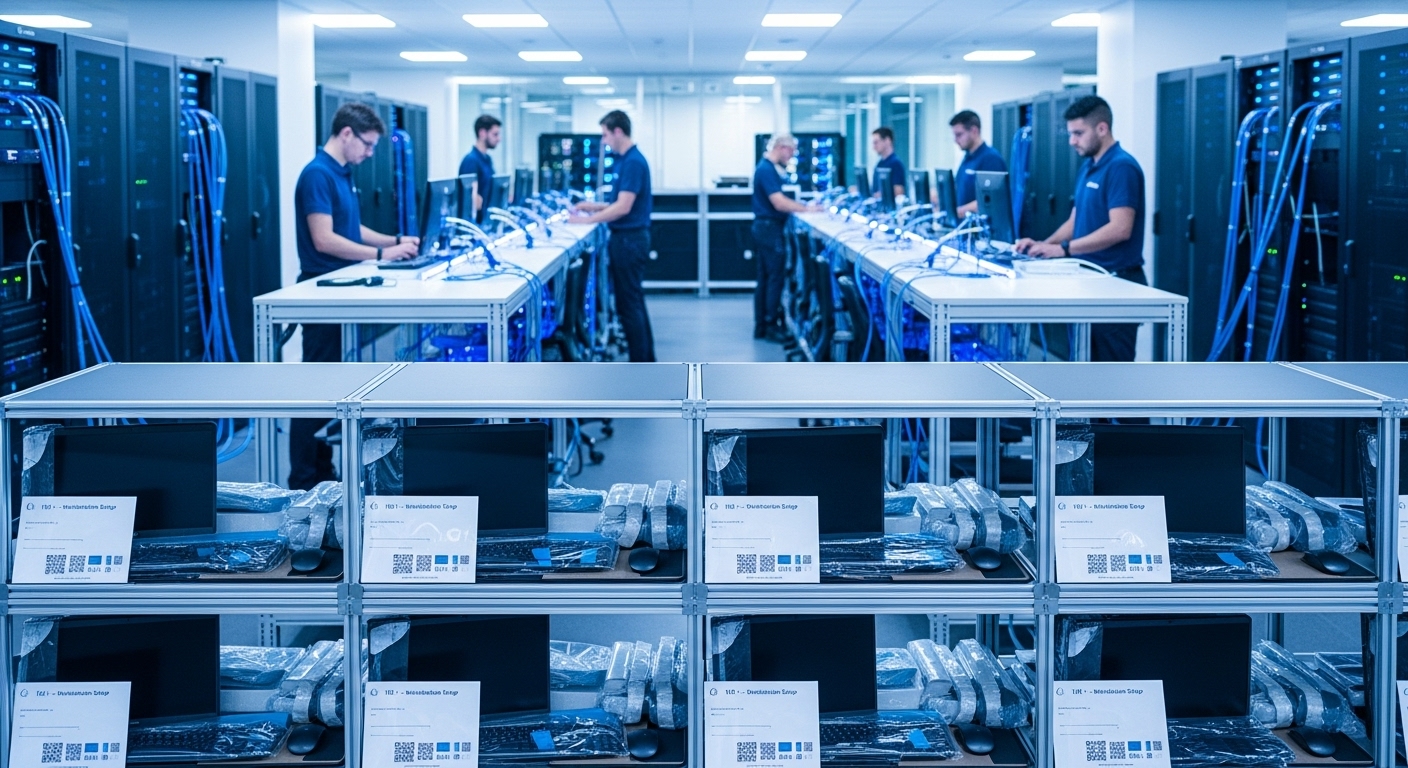In today’s competitive landscape, a company’s physical space is far more than just a place to work; it’s a powerful communication tool. Moving beyond the superficiality of a logo decal on the reception wall, savvy leaders now recognize the office as a three-dimensional embodiment of their brand’s ethos, values, and vision. This evolution from aesthetic decoration to immersive experience is critical. A thoughtfully branded environment can significantly boost employee engagement, attract top-tier talent, and leave an indelible impression on clients and partners. It’s about creating a tangible trademark—a physical narrative that tells your company’s story without saying a word. This guide provides a practical, step-by-step approach to activating your brand within your workspace. We will explore how to decode your brand’s core DNA for physical translation, design a multi-sensory experience, manage the logistics of brand-aligned materials, integrate technology as a seamless touchpoint, and ultimately, measure the powerful impact of your newly transformed space.
Decoding Your Brand’s DNA for Physical Translation
Before a single paint color is selected or a piece of furniture ordered, the foundational step is a deep, strategic dive into your brand’s core identity. This process, often overlooked in the rush to design, is what separates a genuinely authentic space from a generic, trend-driven one. The goal is to create a ‘Brand-Space Brief,’ a foundational document that translates abstract concepts into a concrete design language. Begin by deconstructing your brand into its essential components: mission, vision, and, most importantly, core values. Are you ‘innovative,’ ‘reliable,’ ‘transparent,’ ‘playful,’ or ‘prestigious’? Each of these descriptors has a physical correlation. For example, a brand value of ‘transparency’ might translate into glass walls, open-plan layouts, and accessible leadership offices. ‘Innovation’ could be expressed through flexible, modular furniture, writable surfaces everywhere, and integrated smart technology. ‘Reliability’ might call for solid, timeless materials like dark wood, stone, and brass, suggesting permanence and strength. To gather this data, conduct workshops with key stakeholders from various departments, from leadership to new hires. Ask them to describe the company culture and brand personality as if it were a person. This qualitative feedback is invaluable. The resulting brief acts as a North Star for your architects, designers, and vendors, ensuring every subsequent decision is a deliberate reflection of your unique brand DNA, creating a cohesive and powerful spatial identity.
The Sensory Palette: Branding Beyond the Visual
Truly immersive branding engages all five senses, creating a rich, memorable experience that a simple visual identity cannot achieve alone. While sight is paramount, a holistic approach that considers sound, scent, touch, and even taste can anchor your brand in the minds of employees and visitors on a much deeper, more emotional level. Start by thinking about the auditory environment. What does your brand sound like? An energetic tech startup might curate upbeat, electronic playlists in common areas, while using sophisticated sound-masking technology in focus zones to communicate a respect for deep work. A luxury consultancy, on the other hand, might opt for subtle classical music or complete, library-like silence. Scent is an incredibly powerful tool tied to memory. A custom, subtle ambient scent in the reception area—perhaps cedar and citrus for a brand focused on nature and freshness, or leather and sandalwood for one centered on heritage—can create an immediate and lasting impression. The sense of touch is conveyed through materiality. The cool smoothness of a marble countertop, the rough texture of a reclaimed brick wall, the soft upholstery of a lounge chair, and even the satisfying weight of the door handles all contribute to the narrative. Finally, consider taste. The quality and type of coffee you serve, the snacks offered in the kitchen, or the refreshments provided to clients all act as subtle brand touchpoints that reinforce your company’s commitment to quality and care. By consciously curating this ‘sensory palette,’ you move from decorating a space to crafting a complete brand universe.
Material Matters: The Logistics of Sourcing Brand-Aligned Elements
Translating your brand’s sensory and visual identity into reality requires a robust logistical framework. The selection and sourcing of materials is where brand strategy meets practical execution. This stage is critical for ensuring authenticity and longevity. Every material choice should be a deliberate reflection of your brand values. For instance, a company championing sustainability must go beyond marketing claims and integrate this ethos into its physical form. This means sourcing reclaimed wood, using recycled carpeting, selecting low-VOC paints, and partnering with furniture vendors who can provide transparent supply chain documentation. The logistics involve not just what you choose, but how you procure it. This requires careful planning, budgeting, and vendor management. It’s essential to work with suppliers and contractors who understand and are excited by your brand vision, as they become partners in its execution. Budgeting must account for the potential higher cost of specialized or sustainable materials, weighing it against the long-term value of brand consistency and employee pride. Furthermore, the practical aspects of durability and maintenance are paramount. A high-traffic area requires resilient flooring that looks good for years, not just on opening day. The chosen materials must withstand daily use while continuing to represent the brand’s commitment to quality. This logistical rigor ensures that your tangible trademark is not only beautiful and brand-aligned but also practical and enduring.
Weaving a Digital Thread: Integrating Technology as a Brand Touchpoint
In our digitally-native world, technology is no longer a separate utility but a fundamental thread in the fabric of the workspace experience. Integrating technology as a brand touchpoint is a powerful way to reinforce your identity and demonstrate a commitment to modern efficiency and innovation. This goes far beyond simply providing fast Wi-Fi. It’s about how the technology feels and behaves, creating a seamless and branded digital layer over the physical environment. For example, the guest network login page can be a branding opportunity, showcasing a welcome video or a portfolio of recent work instead of a generic portal. Meeting room booking systems can feature custom interfaces with brand colors and fonts, reinforcing identity in everyday interactions. For a company that values data and transparency, interactive digital dashboards in common areas can display real-time company metrics or project milestones, making key information accessible and engaging. For a brand focused on collaboration and connection, video conferencing technology should be state-of-the-art and effortless to use, removing friction and encouraging communication. The key is to ensure the technology feels intuitive and helpful, not intrusive or gimmicky. When thoughtfully integrated, technology can tell your brand story in a dynamic way, showing that your company is forward-thinking, user-centric, and efficient in its operations.
Spatial Storytelling: Crafting Narratives in Your Floorplan
An office floorplan is more than an arrangement of desks and rooms; it is a script that guides movement, interaction, and experience. By intentionally designing this journey, you can tell a powerful story about your brand’s culture and priorities. The narrative begins the moment someone steps through the door. What is the first impression? An open, light-filled atrium with a vibrant collaboration zone speaks to a culture of openness and energy. A more subdued, quiet reception with curated art might communicate sophistication and focus. The physical path from the entrance to the main work areas can be used to unfold the company’s history and achievements. Consider using environmental graphics, such as a subtle timeline along a main corridor or wall murals that depict key company values in an artistic way. The zoning of the space itself is a core part of the story. Creating a variety of environments—buzzing social hubs for spontaneous connection, quiet library-like zones for deep concentration, and dynamic project rooms for teamwork—tells employees that you understand and support their diverse work needs. The placement of these zones matters. Locating the café or kitchen at a central crossroads encourages serendipitous encounters, reinforcing a collaborative culture. Dedicating prime real estate with the best views to communal areas rather than executive offices sends a powerful message about a democratic and employee-centric philosophy. Through this spatial storytelling, your floorplan becomes an active participant in building and reinforcing your desired company culture.
Measuring the Echo: Gauging the ROI of Your Branded Space
Investing in a deeply branded workspace is a significant strategic decision, and like any investment, its return should be measured. The ROI of a tangible trademark extends far beyond simple aesthetics and can be quantified through a mix of qualitative and quantitative metrics. One of the most immediate indicators is employee feedback. Conduct pre- and post-occupancy surveys to gauge changes in morale, engagement, and perceived productivity. Ask specific questions about how the new environment supports their work and reflects company values. A lower rate of employee turnover following a redesign is another powerful, bottom-line metric. Talent acquisition is another key area for measurement. During the interview process, track how often candidates proactively comment on the office environment. An inspiring space can be a deciding factor for top talent choosing between multiple offers. Monitor your brand’s social media presence; an ‘Instagrammable’ office can lead to a significant increase in organic brand mentions from employees and visitors, boosting your employer brand at no cost. For client-facing businesses, track feedback from partners and customers. A space that clearly communicates competence, creativity, and stability can directly impact client confidence and retention. By setting clear goals from the outset and consistently tracking these metrics, you can demonstrably link your investment in physical space to tangible business outcomes like improved culture, stronger talent acquisition, and an enhanced brand reputation in the market.
In conclusion, activating your brand in your physical space is a strategic imperative that transforms your office from a cost center into a dynamic asset. The process is a journey from the abstract to the concrete—a methodical translation of your core identity into a living, breathing environment. By moving beyond surface-level decoration and committing to a holistic approach, you create a powerful and coherent brand message. It begins with a deep decoding of your brand’s DNA, which then informs a multi-sensory design palette engaging sight, sound, scent, and touch. This vision is made real through the careful logistics of material sourcing and the seamless integration of brand-aligned technology. The very floorplan becomes a narrative, telling a story about your culture and values. Finally, the success of this endeavor is not left to chance; it is measured through its tangible impact on employee engagement, talent acquisition, and client perception. Your workspace is your brand’s embassy and your culture’s incubator. Creating a Tangible Trademark is one of the most powerful investments you can make in your people, your identity, and your future success.





